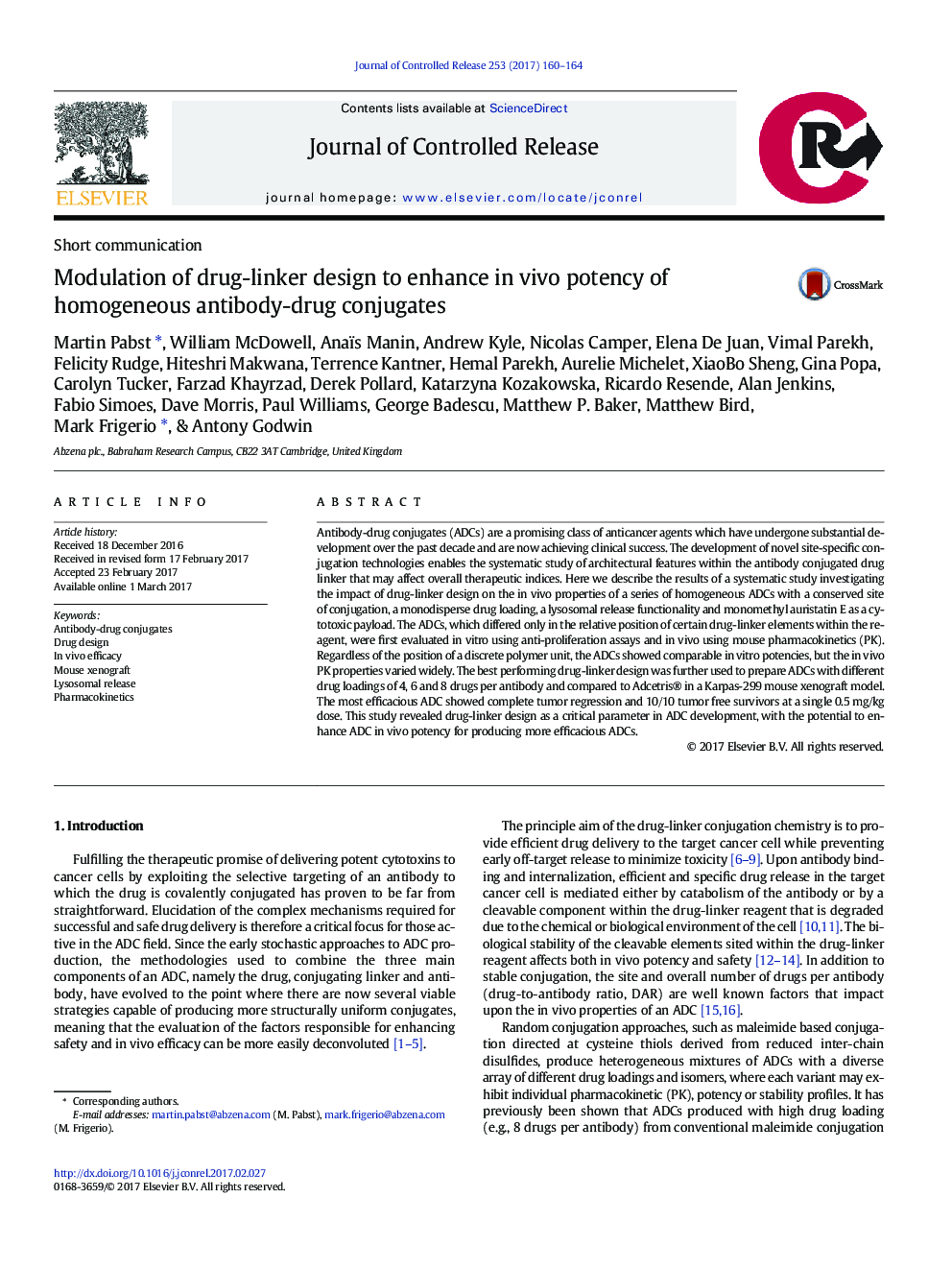| Article ID | Journal | Published Year | Pages | File Type |
|---|---|---|---|---|
| 5433567 | Journal of Controlled Release | 2017 | 5 Pages |
Antibody-drug conjugates (ADCs) are a promising class of anticancer agents which have undergone substantial development over the past decade and are now achieving clinical success. The development of novel site-specific conjugation technologies enables the systematic study of architectural features within the antibody conjugated drug linker that may affect overall therapeutic indices. Here we describe the results of a systematic study investigating the impact of drug-linker design on the in vivo properties of a series of homogeneous ADCs with a conserved site of conjugation, a monodisperse drug loading, a lysosomal release functionality and monomethyl auristatin E as a cytotoxic payload. The ADCs, which differed only in the relative position of certain drug-linker elements within the reagent, were first evaluated in vitro using anti-proliferation assays and in vivo using mouse pharmacokinetics (PK). Regardless of the position of a discrete polymer unit, the ADCs showed comparable in vitro potencies, but the in vivo PK properties varied widely. The best performing drug-linker design was further used to prepare ADCs with different drug loadings of 4, 6 and 8 drugs per antibody and compared to Adcetris® in a Karpas-299 mouse xenograft model. The most efficacious ADC showed complete tumor regression and 10/10 tumor free survivors at a single 0.5Â mg/kg dose. This study revealed drug-linker design as a critical parameter in ADC development, with the potential to enhance ADC in vivo potency for producing more efficacious ADCs.
Graphical abstractDownload high-res image (111KB)Download full-size image
